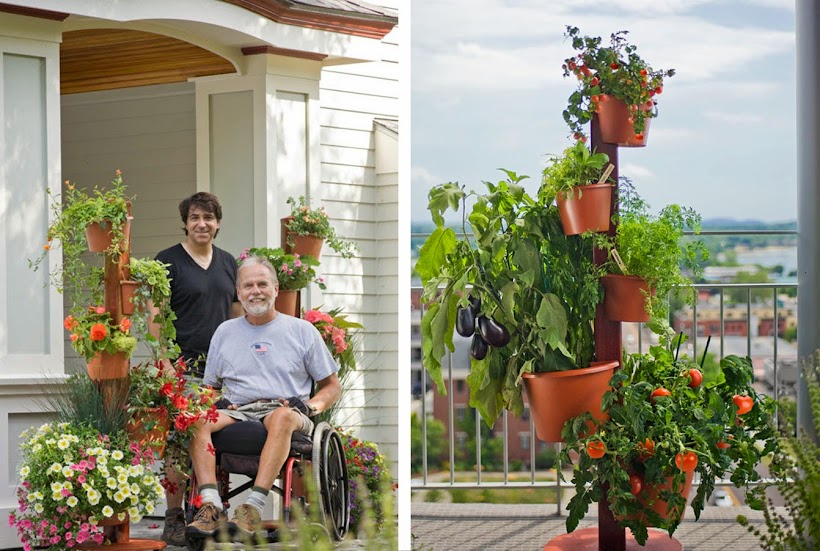While herbs may be easy
to grow inside during the cold months of winters, I enjoy the challenge of
growing a few of my favorite vegetables. Challenge might not be the right word
because growing tomatoes, peppers, cucumbers and other vegetables that blossom
is not difficult. These plants just have needs in addition to those of herbs. Vegetables
that blossom require more light, warmer temperatures and pollination in order
to bear fruit. Here’s how I provides for those needs.
I have five varieties of
herbs growing in three planters on My Garden Post and two planters growing
mixed salad greens. I’ve positioned MGP in front of a large south facing window
and all are doing fine with a minimum of care and attention. I keep them
watered as needed, fertilized every two weeks and I give MGP a 180 degree turn
every few days to balance their exposure to the sun. I’m growing more herbs
than I can consume so I take every opportunity to surprise friends with some
for their cooking needs.
For the fun of it, I have
two large MGP planters of tomatoes (BeefSteak), one small planter with a
California green pepper and another small planter with three cucumbers (Space
Saver) all growing under lights. The room is kept at 65 degrees at night so I’m
using heat mats under the planters to keep the soil temperatures above 70
degrees both day and night. Last week I mentioned that gardening is all about
experimentation and enjoyment of the results. All that remains is pollination.
Pollination of the
cucumbers is the experiment of this week’s post. Outside bees carry the pollen
from stamen of the male flower to the female flower. Inside I have to do the
work of the bees. It’s great fun and easily accomplished in three steps.
1.
Examine the blossoms to determine which is male
and female.
a.
The male flower is noticeably smaller than the
female and grows on a short stem. See photo #1.
 |
#1 Male
Cucumber blossom growing on a short stem
|
b. The female flower is the larger and grows on a
longer stem that resembles a tiny cucumber, the ovary. See photo #2.
 |
#2 Female cucumber blossoms growing on a long stem that becomes
a
cucumber when pollinated
|
1. Using
a small artist’s paintbrush, carefully collect the grains of pollen from the
stamen of the male flower and deposit them in the center of the female flower.
Take care not to damage the female flower. You could repeat this process to
make sure you have conception. Then you just leave them alone and watch the
tiny cucumbers grow. See photo #3
 |
#3 A pollinated female cucumber blossom well
on its way
to producing a mature fruit. (Pollinated 2
weeks ago)
|
1. You
will likely have at least one male flower for each female. Continue doing the
work of the bees with your paint brush until all the female flowers have been
pollinated. As more flowers appear, repeat the process.
Oliver



Oliver, What a great article. Thank you
ReplyDelete